On April 7, the members of Third Platoon of Comanche Company, 4-9 Infantry set out from Forward Operating Base Zangabad on a reconnaissance and security patrol of the area. They were headed into a village the men had dubbed “Bringallzai” (its real name is Korozai), the nickname a mishmash of the surnames of Sergeant First Class Eric Brew, the platoon sergeant, and First Lieutenant Aubrey Ingalls, the platoon leader.
The soldiers left the main gate of the FOB, walked down a paved road for roughly 100 meters, and cut onto a dirt path that wove through the characteristic terrain of Panjwai district: grape fields riddled with symmetrical ridges and deep irrigation ditches, a series of mud-walled qalats, a Pashtun graveyard flying colorful flags honoring the dead, and a gorgeous sea of red and white poppy blossoms. The men walked in a rigid, single-file line to minimize their chances of stepping on a buried mine. And they were led through the rural maze by a large robot.
An Afghan farmer observing the US patrol through the pathways of his compound shot the remote-controlled, tank-treaded machine a quizzical look. A row of heavy flails dangled from an adjustable scoop on its front, capable of churning the soil for bombs. “Please don’t damage the fields … please don’t damage the walls to my house with that,” the farmer asked the Americans through an interpreter.
When the man was asked what kind of crops he was growing, he mentioned “wheat and grapes,” ignoring the large, illegal poppy field adjacent to his home. When specifically asked about the poppies, the farmer dismissively said, “Some poor people grow that.” Finally, when pressed by this reporter about whether the illicit field had escaped eradication by the government because of payoffs to Afghan security forces, he replied coyly, “I’m not sure, but [the growers] might pay to the Afghan National Army or the Afghan Uniform Police.” The conversation ended with his declaration that security in the area is good and getting better.
A few minutes later, a sustained volume of small arms fire erupted about 500 meters to the northeast of the patrol. The bullets weren’t directed at the soldiers, so the men merely paused to listen or looked curiously through their scopes, and called the nearby gunfight in on the radio. “Wrath,” the air support element consisting of one Apache and two Kiowa helicopters orbiting overhead, speculated, “Maybe they’re shooting at us.” As it turned out, the insurgents had another target: a checkpoint manned by officers with the Afghan National Civil Order Police (ANCOP) had been engaged from a treeline about 150 meters away, and the Afghan cops returned fire at the insurgents. Another American unit traveling through the area stumbled upon the engagement, and quickly joined in with their weapons.
In some areas of operations, in some conflicts, a contact with insurgents merely 500 meters distant might stimulate nearby US platoons to maneuver on the enemy. But not that day, and not in Panjwai: 3rd Platoon wasn’t certain about the nature of the gunfire, in an area manned by four different Afghan security forces; no one had called for assistance; moving quickly through the rows of grape fields filled with crumbling mounds and deep holes is difficult; and the district is littered with explosive booby traps. Charging headlong after mysterious gunfire through fields and pathways that have not been carefully cleared of mines is a poor proposition in Kandahar.
Ambushed
Nearly five months before, on Dec. 10, 2012, a US patrol conducted by 3rd Platoon of Bayonet Company, 1-38 Infantry was leaving the village of Loi Kola in the Sperwan area of Panjwai district when bullets began cracking over the formation. According to an after-action narrative, the unit and its Afghan Army partners “began taking accurate and sustained small arms fire from a grape hut and subsequent tree line approximately 150 meters to the south.” When the soldiers reacted toward available cover, Staff Sergeant Wesley R. Williams stepped on a buried pressure-plate IED. The explosion amputated both of his legs and caused catastrophic injuries to the remainder of his lower body. Two nearby soldiers were also seriously injured by shrapnel and the blast wave, and an Afghan soldier elsewhere in the patrol was hit in the fusillade of enemy machine gun fire.
The platoon continued to react. Various soldiers along the line returned fire at the suspected source of the attack, while two men, Private First Class Breilan A. Rosenberg and Staff Sergeant Russell A. Ho, distinguished themselves with their actions. Rosenberg, the platoon’s Line Medic, heard the cries of “Medic!” and ran 150 meters to the front of the formation. Under “heavy, accurate and sustained” fire from AK-47s , RPGs, and at least one PKM light machine gun, he assessed the four casualties, and “rapidly applied three tourniquets, one inguinal pressure dressing and additional lower abdominal packing to [Staff Sergeant] Williams’… pelvic region.”
Meanwhile, Staff Sergeant Ho, an explosive ordnance disposal (EOD) team leader, also ran to the front of the line with his “Minehound CIED (Counter IED)” detector to assess the nature of the explosion and clear the area of secondary bombs. While still under enemy fire, “Ho single handedly cleared over 200 square meters in the initial push to treat the casualties and recover sensitive items.” The staff sergeant, “on his own initiative,” then led his fellow soldiers out of their static position as he swept his detector back and forth over the ground, clearing a path to a landing zone for a medevac helicopter.
Once there, he cleared the LZ and the area surrounding the landing site, including several fighting positions that would allow his fellow soldiers to protect the aircraft. The medevac successfully landed after several aborted attempts under fire, and Ho took the point position of the patrol once again, leading his platoon to link up with supporting forces. Rosenberg and Ho would subsequently be awarded the Bronze Star Medal with Valor device for their actions. But despite the heroic efforts, as well as those of the medevac helicopter crew, Staff Sergeant Williams succumbed to his wounds after arriving at Kandahar Airfield.
The events of Dec. 10 illustrate some of the tactical challenges faced by US and Afghan soldiers in Kandahar province. Buried mines litter the fields and footpaths of Panjwai district, as the Taliban attempt to both attack and shape the operations of their opponents. Since the unit’s arrival in late November, soldiers with the 4-2 Stryker Brigade Combat Team out of Joint Base Lewis-McChord in Tacoma, Wash. have suffered 2 soldiers killed and 17 wounded in combat incidents, many very seriously, with multiple amputations. All but two of the casualties have been the result of pressure-plate IEDs, with the majority of those targeting foot patrols.
The minefields of southern Afghanistan
All conflicts and areas of operation have characteristic threats. In Iraq, the roadside bomb and the suicide car bomb rose to prominence. The early years of the war in Afghanistan were characterized by many more stand-up gunfights and other direct fire attacks, before the planted bomb know-how migrated from other theaters of the Long War to make IEDs more common. All of these techniques, along with rocket fire and suicide vehicle bombs, remain prominent in most portions of the country.
But the IED is the weapon of choice for the insurgency. In 2012, there were “nearly 15,000 IED incidents in Afghanistan, causing about 1,900 U.S. casualties,” according to Pentagon reporting. This figure represents an 80% increase in two years. And the fight in southern Afghanistan after the 2009 US surge of forces has been dominated by a very specific insurgent bomb technique: the pressure-plate IED, a.k.a. mine, mainly intended for foot patrols. Vehicles are still attacked with suicide car bombs and larger pressure-plate IEDs, but the vast majority of the hidden bombs target dismounted soldiers. The result has been a large number of dismemberments and deaths as ISAF forces grappled with a steep learning curve while adapting to the tactic.
The post-surge mines that popped up in Helmand and Kandahar provinces were comprised of crude but effective materials: a wood box connected to a detonator and a yellow water jug filled with homemade explosives. US electronic countermeasures can defeat “remote-control IEDs” set off with a cell phone or other broadcast signal. And opting to place a similar remote control bomb with a physical “command wire” is a riskier proposition for insurgents; the wires are subject to being spotted, and someone has to stick around on the other end of the electric fuse to man the explosives.
As a result, the Taliban rely heavily on the pressure-plate trigger mechanism buried under the soil. When a soldier, Marine, or random civilian steps on one of the traps, a rectangular wood box bows, two metal contacts complete an electrical circuit, and the explosives detonate. Sometimes insurgents simply sprinkle the bombs along well-traveled pathways in hopes of scoring a casualty. Other times, the mines are accompanied by an ambush with small arms fire. The aim, as occurred during the fight in Sperwan on Dec. 10, is to drive forces into natural movements toward cover or maneuver, at which point US and Afghan troops can stumble into minefields.
US forces quickly made common sense adaptations to these attacks: they began patrolling in “Ranger file” – a single line in which each man attempts to replicate the footsteps of the soldier to his front; they augmented the patrols with bomb-sniffing dogs; and they began employing one or more handheld detectors in patrol formations. The most recent evolutions in counter-mine tactics that have risen to prominence also include powerful aerial reconnaissance assets and “leg sav[ing]” battlefield robots. Despite these and other counter-IED advancements, and the more than $20 billion spent to develop them, the bombs remain a persistent threat and an economical tactic for the Taliban.
Detectors
One of the quickest adaptations to the threat of buried bombs was the adoption of metal detectors wielded by soldiers staged redundantly in any patrol formation. Personnel trained in the use of these machines sweep them carefully back and forth before themselves, and the devices will often, but not always, acquire a “hit” on pieces of metal used in the bombs, typically the batteries or metal contacts.
The technology has undoubtedly saved many lives and limbs. But as has inevitably been the case over more than a decade of conflict, insurgents have attempted to adapt to the technique; they have started using components that evade the metal detection. The latest class of US technology has in turn one-upped this adaptation with the “VMR-2 Minehound” and “VMC-1 Gizmo” detectors, devices that concurrently sweep for metal parts and minerals or use a “ground penetrating radar” to scan for suspicious objects underneath the surface.
When a hit occurs, if a soldier is sure that the area is seeded with a bomb, the trap is typically disarmed or an explosive ordnance disposal troop detonates it in place. (In Helmand province, hurriedly trained young lance corporals used to riskily dig up and cut the wires to the bombs themselves; many Afghan troops still do this.) Sometimes a hit by the detector is equivocal, and US forces simply avoid stepping on the area. This guidance – copying the steps of compatriots and skirting potential trouble spots – is dubbed “staying on the path of life” by soldiers in Kandahar.
These techniques are effective but not foolproof. It is always possible for the minehounds to miss bombs, or for someone to step slightly out of line, pressing on an unlucky spot untouched by the machines and the footfalls of several men in front of him. The detonation of a bomb typically results in death or catastrophic dismemberment for the stepper, and shrapnel and concussion injuries for those closest to him.
A number of Afghan soldiers and policemen are being trained in the use of the detector technologies, but trainers in Panjwai were unclear on how many of the machines will be left with the indigenous troops as US troops withdraw. And teaching the local forces isn’t always easy. During a recent US seminar conducted at an Afghan Uniform Police (AUP) checkpoint in Panjwai, one of the cops seemed to enthusiastically absorb the lesson, while two other students were far “too stoned” on hashish cigarettes to become competent. Even without detectors, the Afghan troops, especially the Afghan Local Police native to the area, maintain an advantage the Americans don’t have: intimate knowledge of the local terrain.
“The ALP can spot IEDs just like that,” according to one US soldier, snapping his fingers for effect.
Dogs
The US military has also adapted to the evolving IED threat by increasing the use of highly trained bomb-sniffing dogs. Breeds typically used in the detection work include the Labrador retriever, German and Dutch Shepherds, and the Belgian Malinois. Handlers walk the dogs in the front portion of a patrol and the animals sniff the ground above a potential bomb, responding “passively” (stopping and looking at an area) if they smell explosives. On the April 7 patrol, “Sassy” the yellow Lab was also directed to sniff two cars suspected as vehicle-borne-IEDs; the dog’s nose made the task infinitely quicker and less intrusive than a physical search by humans.
The canine soldiers, like their human counterparts, vary in skill, personality, and responses to combat situations. Sassy is rated well by her trainer, but the dog, like many bomb-sniffing canines in Afghanistan, can develop problems on long patrols.
“She’s pretty good … when she conducts searches in a training exercise she does it perfectly,” explained Private First Class Dustin Byrd, Sassy’s handler. “But sometimes when she’s on a long patrol and she gets hot and tired, she loses [focus].”
The dogs also have varied responses to stress. Some animals get spooked by gunfire and explosions, eventually developing post-traumatic stress disorder, while others handle combat with aplomb. “Oogie,” a black European Labrador Retriever assigned to another unit in Panjwai, is rated as unusually professional and unflappable by the soldiers who work with him. Gunfights and detonations “don’t bother him” explained Oogie’s handler, Sergeant Jacob Cozort, as they waited outside a tribal shura conducted at an American base near the village of Mushan in late March. Minutes later, a distant explosion outside the base’s walls illustrated Cozort’s point: Oogie briefly cocked his head toward the rumble, seemed to consider it for a millisecond, and nonchalantly returned to affectionately pressing his body up against any and all nearby humans.
A drawback to the dog’s warrior persona occurred earlier in the deployment, however, when Oogie scored his first confirmed kill during a patrol — on a local sheep. The American soldiers used Commander’s Emergency Response Program (CERP) funds to reimburse a local farmer for the slain animal, to the tune of $148.
On an April 9 patrol by Third Platoon, Comanche Company, 4-9 Infantry in Zangabad, Sassy the Golden Lab made a similar attempt, bucking at the end of her leash when a herd of goats approached the patrol. Byrd restrained the dog, but not before the animals were spooked into an adjacent poppy field. Three young goat herders took the situation in amused stride, despite the fact that they were forced to scamper into the tall stalks after their charges.
“The Baby”
Troops have employed possibly the ultimate evolution of counter-mine efforts in the US war in Afghanistan with the recent adoption of the large, remote-controlled robots that are capable of cutting a path through difficult terrain. One soldier on the April 9 patrol in Zangabad was astonished when he recently encountered the vehicle in Afghanistan, recalling how he had first come across it years ago in a video game.
“In 2008, I was playing Ghost Recon Advanced Warfighter, and I remember dragging that thing around the map thinking, ‘Yeah right, the Army will never have anything like this,'” said First Lieutenant Andrew Alcocer, of Headquarters Company, 1-36 Infantry, before he accompanied the 4-9 Infantry patrol as a detachment. “And then I go on my first patrol with these guys, and they’re like, ‘Hey, bring up the Baby.’ I said, ‘What’s the Baby?’ And around the corner, here it is.”
The DOK-KING MV-4 Mine Clearance System has been a game changer in the US-Taliban tactics race over anti-personnel mines. The heavy flails dangling from the front scoop or the weight of the treads set off the trigger pressure on most bombs designed to target people, and the heavy tread marks left behind offer soldiers a clear path to follow on patrol. In addition, the remote control behemoth serves as quick, mobile cover in the event of a firefight; it can turn 360 degrees on a pivot to switch directions; and it can carry much of the weapons, food, extra ammunition, and other heavy equipment that soldiers take with them on a foot patrol.
“The Baby” occasionally gets stuck, typically if an operator drives it off a decline or into a muddy ditch with deep water, but its intermediate size and powerful treads allow it to fit through most of the narrow passageways of Afghan compounds, and the machine comes equipped with robotic arms that can assist in recovery from a ditch. All the robot requires is a relatively flat surface.
“We can’t always have, especially with some of the routes we go on, the benefit of RCP (route-clearance packages): big, huge, professional engineer [equipment] out here,” said Alcocer. “So this thing, for just a platoon-sized element, the way you can just cut up and dig through trails for us real fast, it’s invaluable. Plus, you can throw on the ammo, the water for a quick resupply. It’s great.”
“It’s a leg saver,” chimed in another soldier.
Air power
Just prior to 3rd Platoon’s departure for the reconnaissance patrol on April 9, one of the soldiers swore under his breath. When asked what had bothered him, he pointed up and replied, “Look: the blimp is coming down.”
Sure enough, one of the large white Persistent Ground Surveillance System (PGSS) blimps that serve as the Americans’ most trusted reconnaissance resource was slowly lowering toward the ground. Though the sky was clear, the weather report anticipated difficult storms later in the day, and the blimp, and its all-seeing cameras, was being pulled down as a precaution.
The insurgents are keenly aware of the blimps’ powers of observation, and sometimes take shots at them in a bid to remove the US advantage, but with rare success. More often, insurgents attack US and Afghan forces when a blimp is out of commission due to weather or maintenance. Making matters worse on April 9, the two to five attack helicopters that typically circle over Zangabad (usually two Kiowas and one Apache) were also mysteriously absent, possibly due to “red air” (poor flying conditions). The distant roar of an unseen fighter jet maintained some degree of comfort.
In the end, the patrol passed uneventfully. But the soldier’s reaction to the loss of air assets and his anticipation of a Taliban attack are indicative of the advantage this advanced technology now affords US troops in the latter stages of the war. In addition to limiting gunfights or complex sneak attacks on US bases, the reconnaissance has proved to be a big advantage in the counter-IED battle.
“To make [the pressure-plate IEDs] work, you need batteries,” explained Colonel Michael Getchell, the commander of 4-2 Stryker Brigade Combat Team, and the top US officer in Panjwai. “We [do] see [the batteries] with our metal detectors, but we actually see them with our balloons, because [the insurgents] don’t have enough batteries. You can’t turn the IED on and leave it on, or your batteries are going to die. So you gotta go back and forth to it. Some will turn them in the late afternoon, so [US forces] don’t do night operations, and then turn them off in the morning, so the local population can go to market, go to school. Others will turn them on in the morning and turn them off at night.”
US airborne reconnaissance, especially the blimps, enables US personnel to spot insurgents planting or tending the power supply on one of the mines. The ability to identify these locations has given US forces a leg up in the IED tactics race in Panjwai, according to Getchell, at least for now. But as US forces draw back and Afghan soldiers and cops take the lead, it remains unclear whether these significant benefits afforded by US aerial reconnaissance will persist after withdrawal in 2014. In the meantime, US troops continue to provide the overwatch to their Afghan counterparts, in addition to blocking positions, quick reaction help, and helicopter medevac services.
“I’m not pushing with my guys in [western Panjwai]. The Afghan forces are pushing in there,” said Getchell. “This is the first fighting season that the ASF (Afghan Security Forces) are going to be not just in the lead but responsible for their success. We are going to be overwatch, let them succeed, let them fail a little bit, let them stumble, but don’t let them fall. Because if you let them fall, that can give the enemy some momentum that’s hard to reverse.”

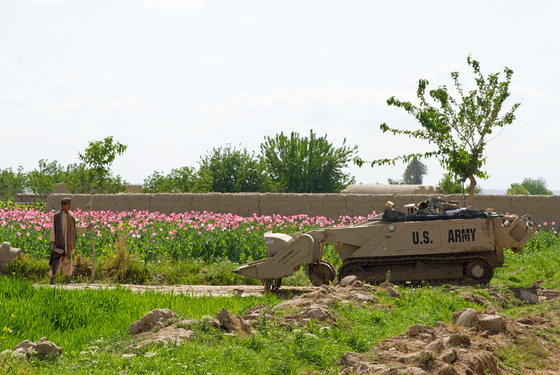
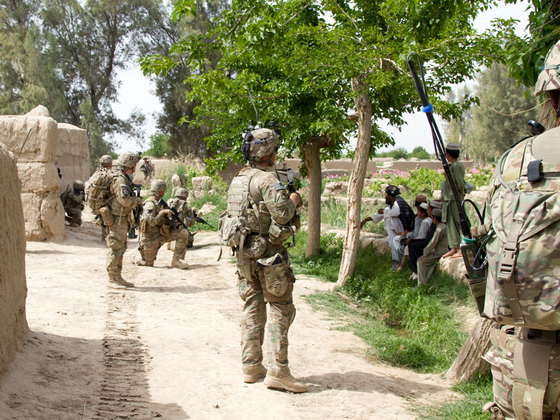
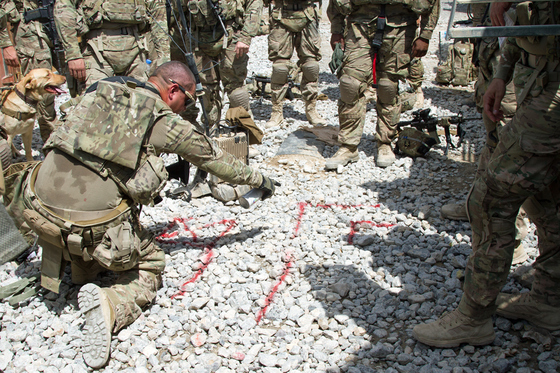
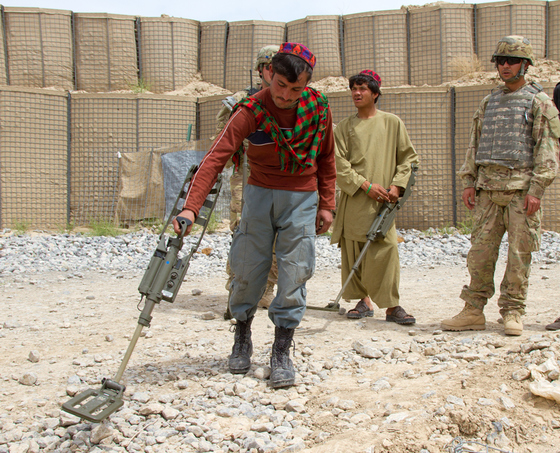
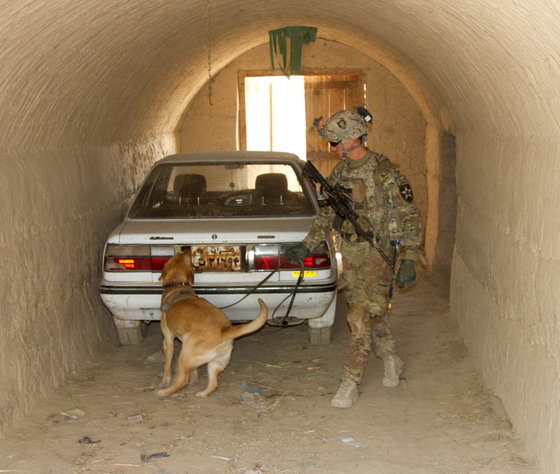
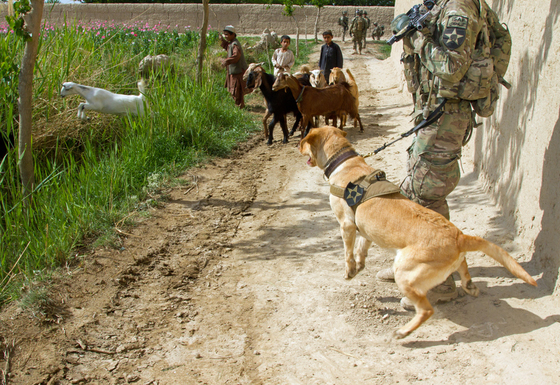
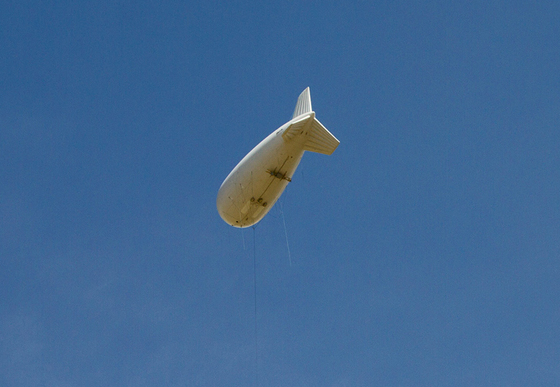







5 Comments
Hi Bill: Thanks for the news from that part of the world. Enjoyed the article. Do me a favor: say hi to my son Colin Michael. He is there with the Psy Ops unit. Best wishes, Pete.
BTW, I have really enjoyed your articles from FOB Zangabad. Really cool I can read about some of what my boys are going thru (my other son is at FOB Abazullah).
Poppies in background?
Thanks for another report from the Afgan front Bill.
Bill I very much look forward to your reporting from the front lines of afghanistan. Thanks again
Dad dude! I just got pointed to this article by a guy who was here, he saw your comment. Just completed my last mission here, see you soon, love you!